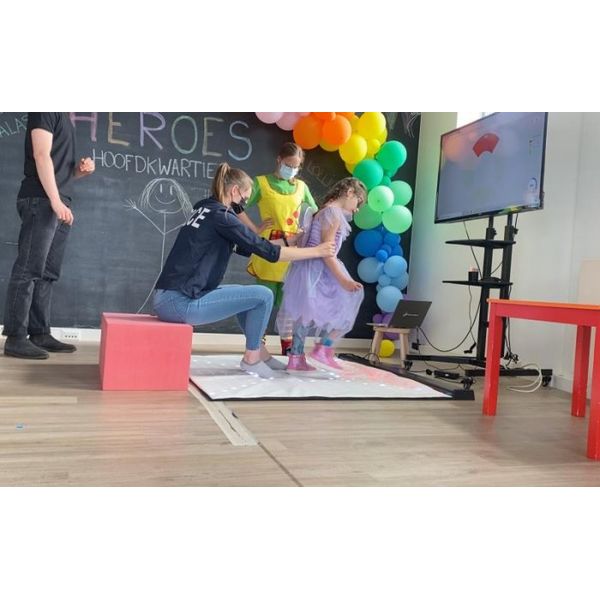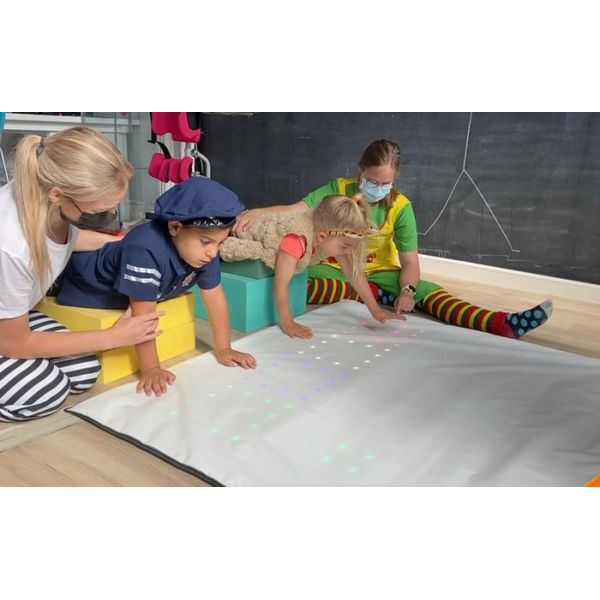

- Home
- Companies
- Creative Therapy
- Articles
- Rehabilitation Dyskinetic CP - Case ...
Rehabilitation Dyskinetic CP - Case Study
- Cheerful and enthusiastic child
- Dyskinetic Cerebral Palsy - GMFCS III
- Outpatient rehabilitation
- Uses Kaye Walker
- Responds well to NDT (Bobath)
Tonia currently moves around with a K-Walker. The main goal during her therapy is to practise and stimulate targeted movements for both the upper and lower limbs. Throughout her therapy Tonia seems to respond well to Neuro-Developmental Treatment (NDT) and the accompanying facilitations. However, she quickly loses focus throughout the therapy and quickly becomes frustrated. By digitising Tonia`s conventional therapy, the exercises can be offered in a more interactive way. Recent research has already shown that exergames can have a positive effect on goal-oriented movement in children with CP [1]. Moreover, by using a playful environment, Tonia remains motivated, which only stimulates therapy compliance and motor learning.


- Practising controlled weight shifts
- Stimulating targeted movement in upper limbs
Weight transfer left-right
Throughout a therapy session, much time is spent practising balance. By means of active exercises and facilitations by the Bobath therapist, we work on the targeted shifting of the body`s centre of gravity. This exercise is sometimes combined with reaching exercises, but Tonia does not like these and regularly loses concentration. During this exercise the therapist always stays close to Tonia in order to be able to give the necessary feedback (e.g. sweep tapping).
Controlled arm movements
In order to practise the targeted movements of the upper limbs, the therapist uses reaching exercises in different positions. The therapist holds an object and Tonia tries to grasp it as efficiently as possible and move it to another specific point in space.
Balance Orchestra
Gradual weight shifts can be practised easily with this game. The speed and amplitude of the shifts can be set. In addition, this exercise can be performed not only in standing but also in sitting (e.g. using a board or Togu Ballstep). Because of the limited active space on Matti, support materials can be placed on the mat. The therapist can also take place behind Tonia, without this affecting the game. This set up allows for facilitation throughout the exercise.
Dance Game
This game offers dynamic goals in an interactive way. By performing the game in a lying posture, maximum work can be done on the targeted movements of the arms. The combination of auditory and visual stimuli provides cues that help automate and time the movements. Watch the Exercise Here
Twister
The twister game works on different elements: body coordination, core stability, general fitness, ... This game can be played alone or in pairs. In this way the children can be motivated and challenged at their own level. WATCH THE EXERCISE HERE
